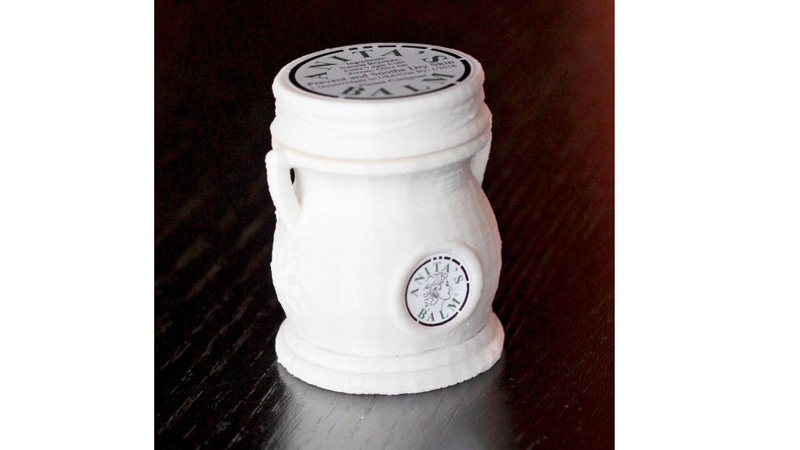September 5, 2014

Back in 2011, Anita Redd decided to share with the rest of the world her innovative solution to a flaky situation—a life-altering eczema and skin care moisturizer. Jump ahead a few years later and now 1,300 stores nationwide carry Anita’s Balm including Smith Drug, Fleet Feet Sports and numerous specialty stores, and she has since launched other product offerings.
While sales were soaring, Anita had encountered a packaging dilemma as bottles were getting discontinued, so she embarked down the do-it-yourself road and opted for an alternative method to solve her problem—3D printing. This would allow her to customize the bottle design however she wanted, all while using biodegradable materials that decompose much more quickly than traditional plastic.
"I have no chemical background, but I was going to figure it out," she says.
The end result is a 1-oz biodegradable roll-up container that sold out in weeks upon its launch into the marketplace.
"It's the only one like it on the planet," Redd says. She has a patent pending on the design. "The ability to compost and biodegrade is really going to impact the cosmetics industry in unimaginable ways."
Today, her offerings have grown to include the 4-oz jar, lip balm, eye balm, hair balm and a 2.2-oz roll-up that even children can use easily and safely.
Packaging Digest got exclusive details on the innovative packaging from founder Anita Redd.
What turned you on to 3D printing?
Redd: We were excited about the possibilities available to us with 3D printing, in terms of the different plastics we could use and the different shapes we can create. We chose poly lactic acid filament because it is biodegradable and we created a very unique five-piece jar. 3D printing enables us to change our designs relatively quickly and inexpensively and we can adapt to different needs our company has.
Were there any other unexpected results and/or pleasant surprises from packaging production standpoint?
Redd: We experienced some unexpected results along the way with our jar but were able to adjust our drawings and print again. We were pleasantly surprised with how well the jar turned out and with how we can keep our Maker Gear running around the clock with few problems, once we initially got it set up. Maker Gear has made this venture possible and I give great compliments to Rick and Karen Pollack and Josh in their technical department. They have priority mailed parts to us and helped every step of the way; we only use Maker Gears.
What design trends does your packaging set in the cosmetics market?
Redd: Typically cosmetic jars are decorative but use ABS plastic which takes 500 to 1,000 years to break down in landfills and oceans. Jars like ours prove containers can be functional and decorative and not harm the environment. Twist-up tubes are not new—we have several in our product line—but the ability to look like a jar and to twist up the product from the bottom is new, we have a patent pending on the design.
About the Author(s)
You May Also Like


